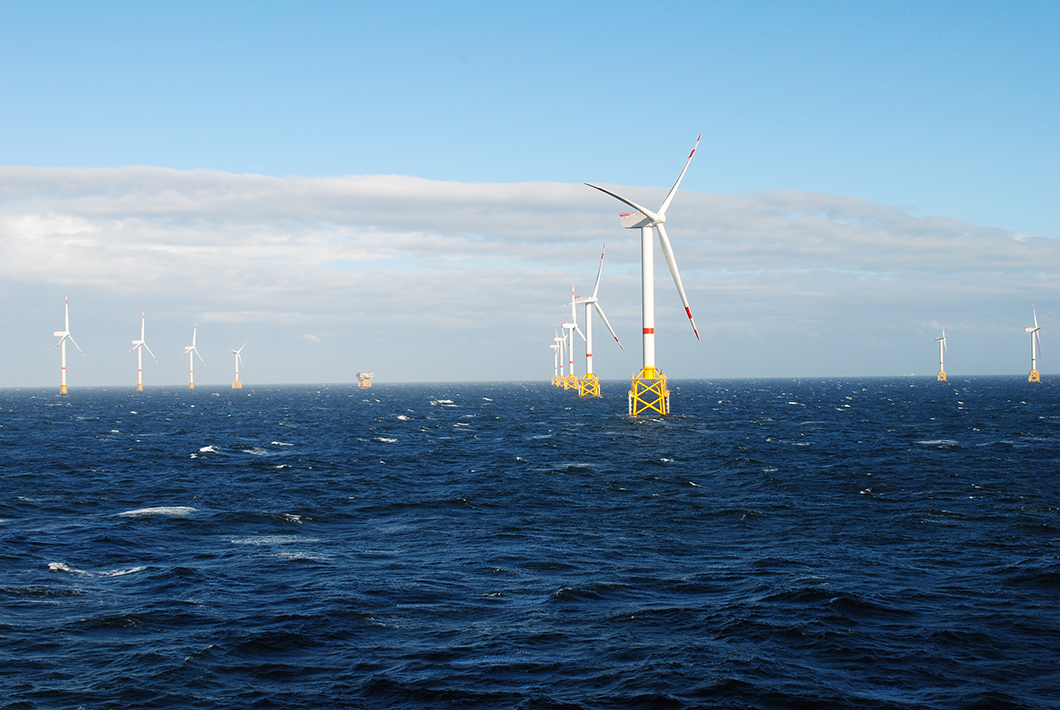
Wind turbines with jacket support structures in an offshore wind farm
Source: Volker Schlichting/EyeEm/GettyImages
Engineers design support structures of wind turbines in offshore wind farms such that they can endure the permanent dynamic excitation due to wind, waves and blade rotation and the corrosive marine environment. They employ engineering models to forecast the demand on and the condition and performance of the structural systems. Such predictions are subject to large uncertainties. This means, for example, that adverse structural damages such as fatigue cracks may still develop during the service life even if the structures are carefully designed, fabricated and installed. To reduce the uncertainty in the structural condition, inspections are performed. Their outcomes support predictions of the future structural condition and performance and thus enable an improved predictive planning of maintenance activities.
Operators of offshore wind farms located within German waters typically inspect 25% of the turbine support structures in a wind farm each year. Consequently, each support structure is inspected at a four-year interval. While this approach ensures acceptable levels of structural reliability, it is not clear to what degree it is optimal. Identifying the optimal inspection and maintenance regime for turbine support structures in an offshore wind farm is a complex decision problem. To quantitatively solve this problem, we develop and utilize engineering reliability, risk and decision analysis methods.

Expected total service life of offshore windturbines
Source: BAM, Division Buildings and Structures
In the current paper, we present a risk-informed method for a system-wide optimization of inspection and repair strategies for turbine support structures subject to high-cycle fatigue. The method is one of the main outcomes of the recently completed research project Syspark, which has been funded by the energy company innogy SE. The method identifies the inspection strategy that optimally balances the expected service life cost of inspection and repair with the achieved reduction in the service life risk of structural failure. In a case study considering a steel frame with characteristics similar to a jacket support structure, we show that the optimal inspection interval – one of the main parameters of an inspection strategy – is eight years.
A sampling-based approach to identifying optimal inspection and repair strategies for offshore jacket structures
Ronald Schneider, Andreas Rogge, S. Thöns, E. Bismut, D. Straub
Proc. 6th International Symposium on Life-Cycle Civil Engineering (IALCCE 2018), Ghent, Belgium, Pages 1081-1088, 2019
BAM, Department Safety of Structures, Division Buildings and Structures


